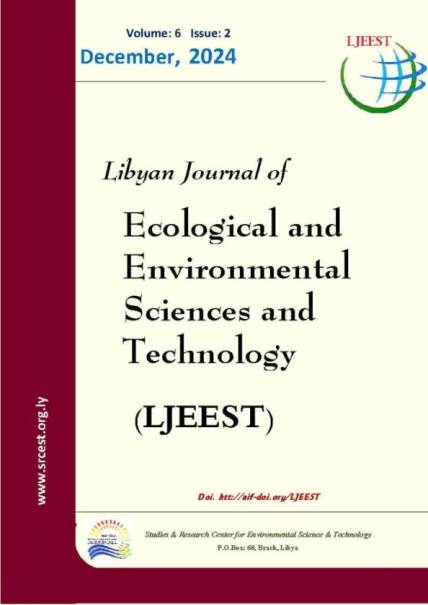Morphological and Anatomical Structure of Aplysia fasciata, (Poiret, 1789) Mollusca Gastropoda: Aplysiidae in the Western Coast of Libya
DOI:
https://doi.org/10.63359/h4q4kh11Keywords:
A. fasciata , Morphological, Reproductive system, Mediterranean SeaAbstract
Aplysia fasciata is a peculiar marine gastropod that is a one of the Aplysiidae family. It is frequently seen in the eastern Atlantic Ocean and the Mediterranean Sea's coastal waters. This study investigated structure of morphological and anatomical of A. fasciata. Thirteen specimens of A. fasciata were obtained on 16th of June, 2022 during spawning season that were available significantly and abundantly. Specimens were kept in the laboratory in filtered seawater with a salinity of 37 ppt, pH 7± 0.5, room temperature 25°C, and water temperature 20°C. Until the samples are study the external form and then to study dissected internal organs, anatomical investigations. Morphological features usually coloured extremely dark brown. It has soft body is coated in a thick substance that resembles mucus and has two tentacle pairs, the largest pair being utilized for sensory awareness and react defensively to touch by retracting their gills into their protective mantle cavity. Had for thirteen A. fasciata their external measurements obtained in order to examine their physical attributes than dissected it was found the digestive tract is mostly composed of the foregut, midgut, and hindgut. The oesophagus and a buccal mass made up the foregut. A sizable crop, grinding plates, and a real stomach made up the midgut (digestive pouch). An intestine and a rectum comprise the hindgut. Reproductive system had both male and female reproductive organs. The reproductive system consists of ovotestis, small hermaphroditic duct, accessory genital masses, large hermaphroditic duct, seminal receptacle, spermatheca, genital aperture. The tiny and big hermaphroditic ducts are attached to this mass. The survival of A. fasciata depends on its intricate reproductive system. The inside shell in A. fasciata possesses a simple, It has a saucer like form, and a recurved, pointed umbo and rostrum that dangle over the concave interior. The shell is imbedded in the mantle. The exterior is coloured yollesh and features a sculpture of a few faint radiating lines, close-set concentric striae, and growth lines. Particularly A. fasciata are amazing animals with unusual behaviours and adaptations and their study offers insightful knowledge about marine life.
Downloads
Published
Issue
Section
License
Copyright (c) 2022 المجلة الليبية لعلوم وتكنولوجيا البيئة

This work is licensed under a Creative Commons Attribution-NonCommercial 4.0 International License.














